Comparison of guiding types
Ball guides – precise and smooth running

Areas of application
- For highest speeds
- For maximum precision
- For high requirements regarding radial offset
- For thin sheets
Characteristics
- Minimal wear through axial offset of the balls
- Special inlet geometry guarantees a smooth entry of the balls
- Free of play guiding through optimal preload
- Smooth running through rolling motion of the balls
- Allows easy closing action of the dies
- Can become overloaded at high shear forces due to the point contact
- Stroke / path is limited
The bronze coated sliding guide – for high shear forces

Areas of application
- Ideal for limited speeds (30m/min)
- For die clearances bigger than 0.03 mm due to the medium play of 0.01 mm (G4)
- Ideal for thick strips due to the high shear forces
Characteristics
- The circumferential oil groove ensures perfect lubrication – also in the case of short strokes
- The stroke / path is not limited – extension of the pillar is possible
- Risk of die tilting during the closing action
Roller guides – precise and stiff

Areas of application
- For high speeds
- For maximum precision
- Higher stiffness than with the ball guide
- Suitable for fine blanking due to high shear forces
Characteristics
- Minimal wear through axial offset of the rollers
- Special inlet geometry guarantees a smooth entry of the rollers
- Free of play guiding through optimal preload
- High stiffness due to lines touching the rollers
- In many cases more resilient than the ball guide
- Stroke / path is limited
- More expensive than the ball guide
- Can only be used with axial movements
Self-lubricating sliding guide – the strong alternative

Areas of application
- Ideal for self-lubricating applications thanks to the oil depot and solid lubricant MoS2 in the sinter layer
- Up to 250 °C
Characteristics
- The frictional heat causes the oil to rise to the sliding surface. Due to its capillary action the oil retreats in the sinter layer (when the machine is idle).
- The ideal diffusion zone between the sinter layer and the steel sheath ensures inseparable molecular bonds
- High resistance to abrasive wear and very good emergency operating features without additional lubrication
Sliding guide made of steel

Areas of application
- At high shear forces
- For short stroke rates
Characteristics
- The circumferential oil groove ensures perfect lubrication – also in the case of short strokes
- Guiding diameter for low coefficients of friction Ra 0.3 honed
- Possible die tilting during the closing action
Solid bronze sliding guide

Areas of application
- For large sheet thickness due to guide tolerance G6
- For moderate stroke rates
- For medium shear forces
Characteristics
- Optimum lubrication through graphite rings
- Initial lubrication with VGM 160 reduces the wear
- The stroke/path is not limited – extension of the pillar is possible
Continuous abrasion of the solid lubricant




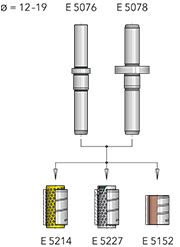




 © 2024 by Meusburger Georg GmbH & Co KG | All rights reserved
© 2024 by Meusburger Georg GmbH & Co KG | All rights reserved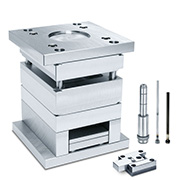
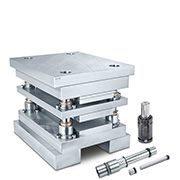
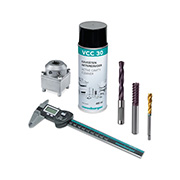
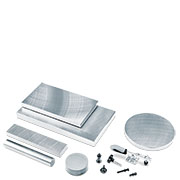


 Česká republika [CS]
Česká republika [CS]
 Danmark [DA]
Danmark [DA]
 Deutschland [DE]
Deutschland [DE]
 España [ES]
España [ES]
 France [FR]
France [FR]
 India [EN]
India [EN]
 Italia [IT]
Italia [IT]
 Magyarország [HU]
Magyarország [HU]
 México [ES]
México [ES]
 Nederland [NL]
Nederland [NL]
 Österreich [DE]
Österreich [DE]
 Polska [PL]
Polska [PL]
 Portugal [PT]
Portugal [PT]
 România [RO]
România [RO]
 Schweiz [DE]
Schweiz [DE]
 Slovenija [SL]
Slovenija [SL]
 Srbija [SR]
Srbija [SR]
 Suomi [FI]
Suomi [FI]
 Sverige [SV]
Sverige [SV]
 Türkiye [TR]
Türkiye [TR]
 United Kingdom [EN]
United Kingdom [EN]
 USA [EN]
USA [EN]
 Ελλάδα [EL]
Ελλάδα [EL]
 България [BG]
България [BG]
 Росси́я [RU]
Росси́я [RU]
 华 [ZH]
华 [ZH]